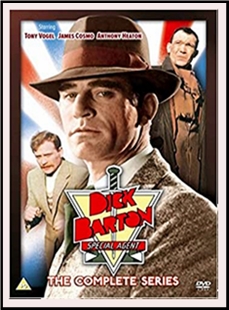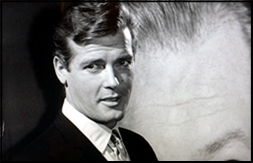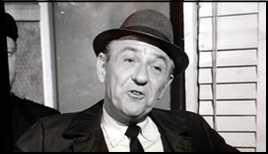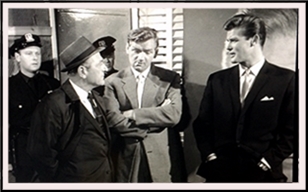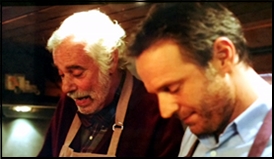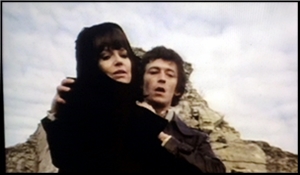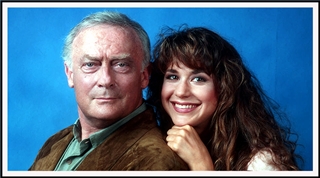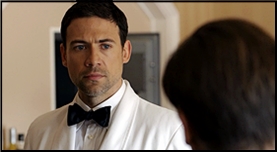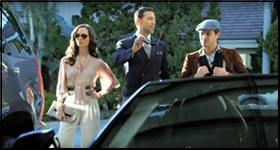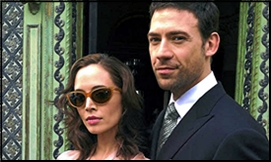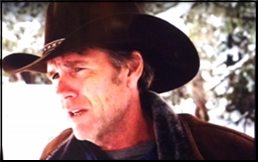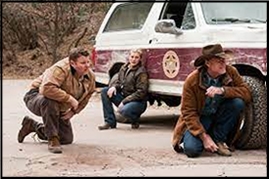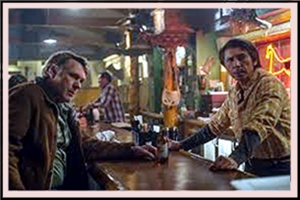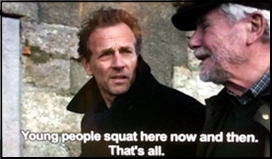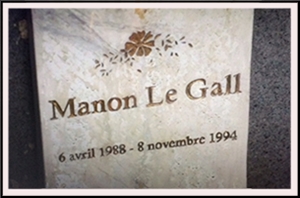Sat 8 Jan 2022
A British TV Series Review by David Friend: DICK BARTON – SPECIAL AGENT.
Posted by Steve under Reviews , TV mysteries[10] Comments
DICK BARTON: SPECIAL AGENT. Southern TV, UK, 1979. Tony Vogel (Dick Barton), Anthony Heaton (Snowey White), James Cosmo (Jock Anderson). Creator/screenwriter: Norman Collins. Other screenwriters: Julian Bond, Clive Exton.
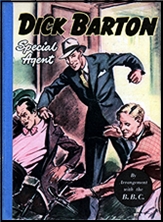
Back when radio was the most significant medium for home entertainment, fifteen million people would listen nightly to Dick Barton: Special Agent, an action adventure serial replete with cliff-hangers and derring-do, on the Light Programme. It followed the adventures of former commando Captain Richard Barton and his two friends ‘Snowy’ White and ‘Jock’ Anderson as they repelled the plans of various criminal masterminds and somehow escaped the perilous traps that were repeatedly set for them.
The radio serial ran between 1946 and 1951, usually at 6.45 pm, for fifteen minutes apiece. 711 episodes were made, all written by Geoffrey Webb and Edward J. Mason, and each adhering to the thirteen rules of conduct which decreed that Dick could not use bad language, drink alcohol or use a knife to harm. Apart from the hero’s name and the adventure it evokes, the serial is best remembered for its theme tune, “The Devil’s Gallop,” a rousing and rambunctious slice of genius by composer Charles Williams which makes one want to dash about the room and press against the wall as though hiding from fiendish saboteurs.
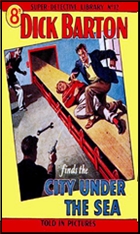
The nanny state killed the show off after five years in the belief that it was damaging to the dear young children. By this time, however, the show was a nationwide phenomenon, spawning a behind-the-scenes book, another volume of short stories and three films from Hammer Studios (at the time, best known for making thrillers, not horrors). The BBC then replaced it with a rustic drama named The Archers, the theme tune of which must have made every red-blooded adventurer used to Barton’s buccaneering wish for another war.
The late 1970s saw a minor revival for Dick and his friends. A somewhat sparsely written but nonetheless enjoyable book, novelising three of the radio serials, was published in 1977. That same year, filming took place on a televised series of new adventures. Made by Southern Television, a small ITV company, each episode lasted ten minutes (excluding commercials) and shown on Saturdays and Sundays from January to April 1979.
The 32 episodes starred Tony Vogel as Barton, Anthony Heaton as ‘Snowy’ and James Cosmo as ‘Jock’ and comprised four adventures, each lasting between six and ten parts each. Typically for its time, the serial was shot on video, a format which can make the most expensive television look cheap. Such an impression, in this instance, would be accurate as there were apparently several budgetary issues which undermined the production of the programme.
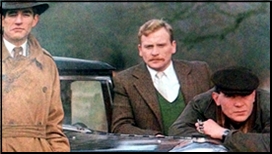
This is mostly apparent in the sometimes dodgy direction work, though it can only be imagined that the director was doing his best with the little he had. The location work – usually one of the most costly features of scripted television – is plentiful and the acting is more or less solid throughout. As you would expect from such a short serial, the whole thing runs like the clappers, and the scripts – many by Clive Exton, who would later bring Poirot and Jeeves & Wooster to television – wisely play it straight throughout. There is, of course, the odd bit of wince-inducing dialogue, but all such things can be waved away as attempts at period authenticity.
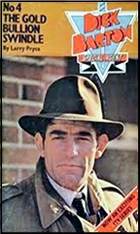
The first adventure sees an old bird named Sir Richard Marley call on Barton when his daughter Virginia and son Rex go missing. They have been kidnapped by the dastardly foreigner Melganik, who plans on substituting tobacco with reefer and thus turning the whole of Britain into “drug fiendsâ€. The story lasts ten parts, co-stars future Strictly Come Dancing contestant Fiona Fullerton and memorably includes the old walls-closing-in-with-spikes routine.
The second adventure, in eight parts, starts a little too similarly as a young girl – this time an old acquaintance of Jock’s – is in danger when her scientist father is kidnapped by the evil Muller. The third serial ties in neatly with the first two and involves a disappearing house, while the last adventure sees the team encounter a couple of menacing, Kray-like gangsters.
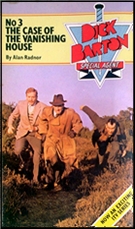
The series is available on DVD and can sometimes be seen nightly on Talking Pictures TV – which is how I saw it. Tony Vogel is outstanding in the part of Barton. He takes it all seriously, remains believable in the period, and can even be tough when he wants to be. The whole thing is basically a children’s show, of course, but it was always going to be and is none the worse for it.
The only downside is the brevity of the episodes: it may have made more of an impact had it been shown in half-hour instalments, like Doctor Who. As it was, for whatever reason, the show was not a success and was quickly forgotten. The production company itself folded within a couple of years.
Dick Barton did not return again until the late ‘90s and then only on stage in live theatre (perhaps inevitably, as he had already featured in every other medium). With only four cast members, the nine plays were comedy-musicals which parodied the brand, boasted innuendo and were mostly staged at Croydon’s now-closed Warehouse Theatre.
The last we have so far heard from Dick and his friends is, funnily enough, due to the TV version. The series produced four novelizations and one of them, The Mystery of the Missing Formula, was released in 2010 on CD and read by a thoroughly game Toby Stephens.
After all these years, I don’t think anyone is quite sure just why a British private detective is walking around calling himself a special agent, but I certainly hope he makes another come-back at some point. Cue music!
